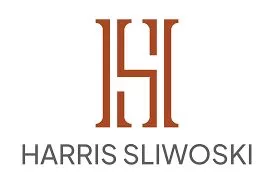Calling the Defendant as an Adverse Witness
As a plaintiff at trial, there is no better way to prove your case than through the mouth of the defendant. Securing statements directly from the defendant can often provide the most compelling evidence for your case. When jurors hear incriminating or contradictory statements from the defendant themselves, it leaves a stronger impression than testimony from other witnesses.
Though jurors expect your witnesses to support your case, they don't anticipate the same from the defendant. This is why calling the defendant as an adverse witness can be a game-changer. When executed correctly, it can elicit admissions from the defendant that strengthen your case and weaken the defense. However, it can be a risky strategy, and you should proceed with caution. This blog post explores the risks and rewards of such an approach.
Spotlight on the Defendant: Shaping the Narrative Early
You might wonder, "Why would I want to put the defendant in the spotlight?" Here's why: Questioning the defendant early allows you to shape the narrative before they have a chance to defend themselves. By questioning the defendant early, you have the unique advantage of catching them off-guard. It forces the defendant to respond in real-time, without the benefit of having heard your entire case. This spontaneity can lead to genuine reactions, slip-ups, or unguarded admissions that would otherwise remain hidden.
Generally, the direct examination of an adverse witness is brief and narrowly focused on the key factual points. California Evidence Code Section 775 allows leading questions on direct examination of adverse witnesses, and other states usually have similar evidence rules.
There is no witness more adverse than the defendant in litigation. This is your opportunity to expose contradictions or weaknesses in the defendant's case, which can be effective to set the tone for the trial.
Case Study: The Risk and Reward in Action
In one of my recent cases, the case turned on each side's version of the same events. As the plaintiff, my client was at a disadvantage because we had the burden of proof. We made the decision to put the defendant on the stand during our case in chief. My client's version of events had been consistent, while the defendants had not.
By presenting inconsistencies in the defendant's testimony, we were able to cast doubt on their overall credibility. Jurors are more likely to question the reliability of the defendant's entire case if they witness the defendant engaging in contradictions firsthand. This strategy can also subtly shift the burden of proof by causing jurors to scrutinize the defendant's story more critically.
As suspected, the defendant's story changed again on the witness stand. Without the safety net of his attorney, the defendant made outlandish claims. This testimony likely wouldn't have surfaced during cross-examination, either because it would have been outside the scope of direct examination or because the defendant would have had time to adapt his story to fit what would have proceeded it. By the time we rested our case, the defendant's credibility was shot, and his case was gutted.
Preparation: The Key to Successful Adverse Examination
For this strategy to work, you must be well-versed in the details of your case. Preparation is key. The more you know, the harder it is for the defendant to dodge your tricky questions. An effective strategy might also involve mock trials or practice sessions, where you simulate the conditions of the actual trial. This helps you anticipate possible reactions from the defendant and adjust your questioning techniques accordingly. Understanding the psychological aspects of witness testimony can also be beneficial in framing your questions to elicit the desired responses.
Highlight the facts you want the defendant to admit at trial and use prior deposition testimony to impeach if the witness tries to change their answer. Preparation and agility allow you to refresh the witness's recollection or impeach as the defendant attempts to avoid or wriggle out of key admissions. However, be forewarned this is a risky strategy that can backfire if not done by experienced litigators with a specific purpose.
Conclusion: A Bold Move for Big Rewards
Remember, this approach is not just about catching the defendant off guard, but also about constructing a narrative for your client that the jury can easily follow. It's about building a case that feels coherent and credible from start to finish. The jury's perception of your confidence and control over the proceedings can significantly influence their final decision.
Calling the defendant as an adverse witness is a bold move that can pay off big. It's a blend of strategy, preparation, and a bit of courtroom theatrics. If you're the plaintiff, it's a tool worth considering in your legal arsenal.
To view the original article, click here.
The content of this article is intended to provide a general guide to the subject matter. Specialist advice should be sought about your specific circumstances.


